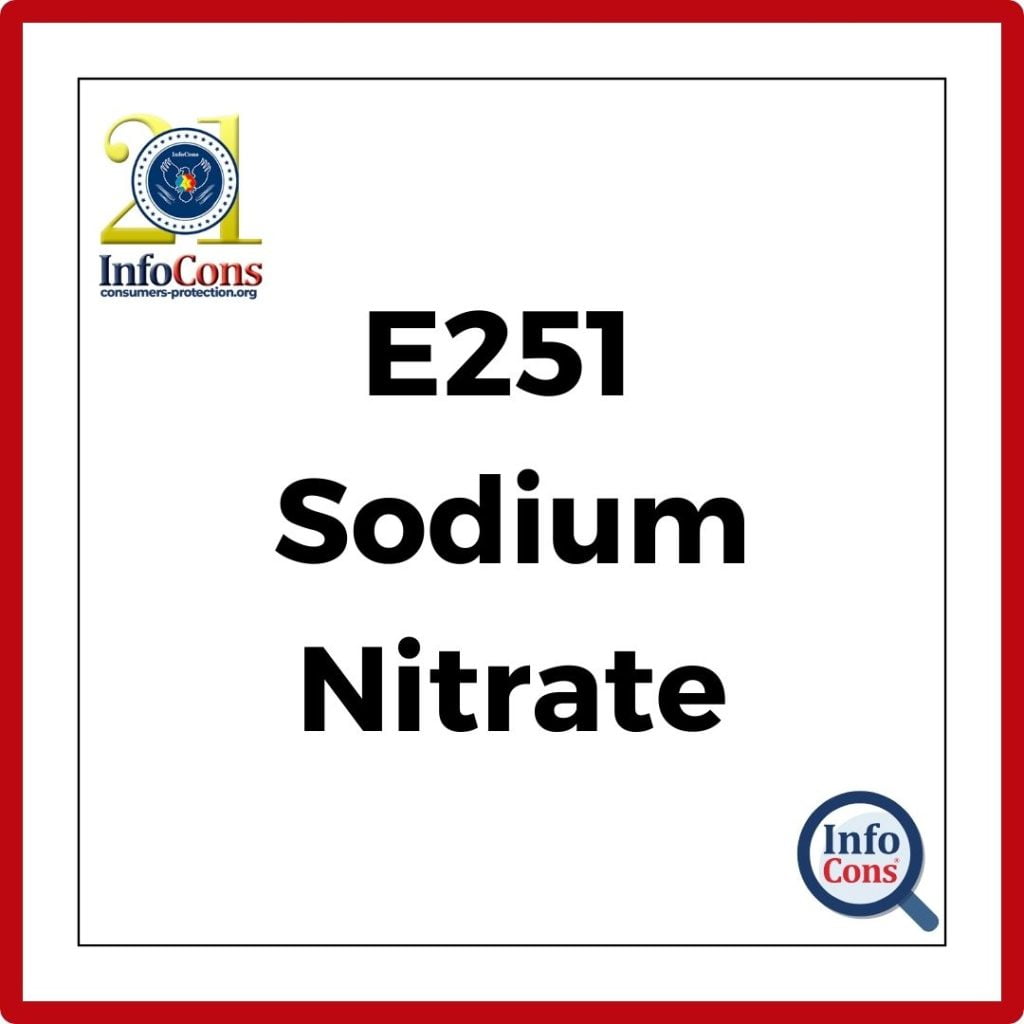 What is the Food Additive E251 ?
What is the Food Additive E251 ?
E251, also known as sodium nitrate, is a well-known and widely used preservative. E251 is produced through chemical processes from sodium nitrate or extracted from natural deposits, as it also occurs as a natural mineral. It appears as a white powder and is used to prevent discoloration of products. It plays a crucial role in preserving various food products, especially cured meats.
E251, sodium nitrate, has the chemical formula NaNO₃. It is a mineral that naturally occurs in various geological settings, particularly in large deposits in Chile and Peru, and is also known as Chile saltpeter. Its use comes with both benefits and health concerns.
Do You Know What Food Additives are ? InfoCons Consumer Protection Informs You !
What is the Recommended Daily Dose ?
The European Food Safety Authority (EFSA) and the U.S. Food and Drug Administration (FDA) regulate the use of sodium nitrate in foods. They have established acceptable daily intake (ADI) levels to ensure consumer safety.
The recommended daily dose, set by EFSA, is 3.7 mg per kg of body weight per day.
In Which Products Can You Find E251 ? InfoCons Consumer Protection Informs You !
The primary application of E251 is in food preservation, especially in the meat processing industry. Here are some of its common uses:
- Curing Agent: Sodium nitrate is widely used in the curing process of meats such as bacon, ham, sausages, and hot dogs. It helps inhibit the growth of harmful bacteria, particularly Clostridium botulinum, which causes botulism, a severe form of food
- Color Fixative: One of the notable effects of E251 is its ability to maintain the pink or red color of cured meats. This is due to its interaction with myoglobin and hemoglobin in the meat, which helps retain the appealing color consumers
- Flavor Enhancer: While its primary role is preservation, E251 also contributes to the flavor profile of cured meats, giving them their characteristic taste.
- Agricultural Uses: Beyond food, sodium nitrate is also used as a fertilizer in agriculture due to its high nitrogen content, which is essential for plant growth.
Read also : Pay attention to Alerts for food products with the European InfoCons App ! InfoCons Consumer Protection Informs You !
Contraindications and Risks
When consumed in large quantities, sodium nitrate can pose health risks. One of the primary concerns is the formation of nitrosamines, which are potentially carcinogenic compounds formed when nitrates interact with amino acids in the body. These compounds have been linked to an increased risk of certain cancers, particularly colorectal cancer.
Excessive intake of nitrates can lead to methemoglobinemia, a condition where hemoglobin is converted to methemoglobin, reducing its ability to carry oxygen in the blood.
Conclusion
In conclusion, E251, or sodium nitrate, is a vital component in the food industry, especially for meat preservation. Despite the potential risks, E251 plays a crucial role in preventing foodborne illnesses and extending the shelf life of products.
Download the InfoCons application !
Look for products that have a cleaner label or use natural additives. By installing Consumer Protection InfoCons App and scanning the barcodes of food products, you can find out the number and type of food additives they contain.
Author – Cosmina Nițu
Master in Nutrition – Infant and new born nutrition
Sources:
https://www.efsa.europa.eu/en/ – European Food Safety Authority (EFSA)
InfoCons – European Organization for Consumers Protection and Promotion of Programs and Strategies , a full member of the World Organization Consumers International, founding member of the Federation of Consumer Associations, and member of ANEC.